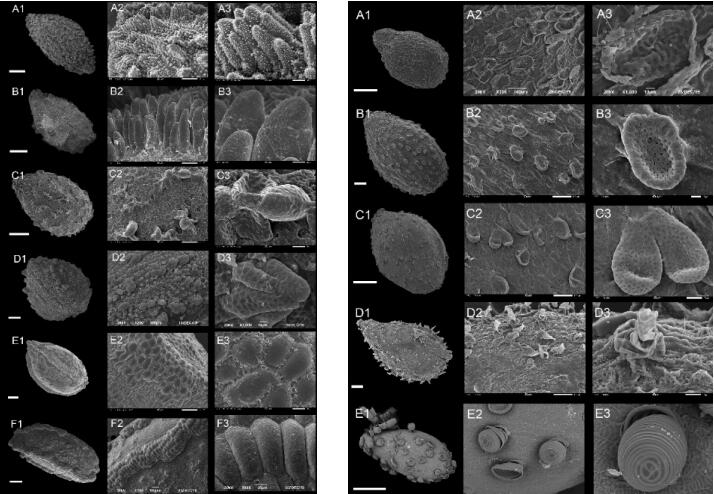Impatiens Linnaeus is notoriously difficult to classify morphologically, and the semi-succulent stems, fleshy leaves, and extremely fragile flowers make it challenging to prepare good herbarium specimens. Compared with flowers, seeds of Impatiens are more stable and conserved, and the importance of seed micromorphology for classification has been recognized. However, the micromorphological seed coat characteristics of Impatiens seeds have not been systematically studied.
Supervised by Ph.D. CONG Yiyan and Prof. HU Guangwan, master student SONG Yongxiu from Hunan Normal University and Ph.D. student PENG Shuai from the Wuhan Botanical Garden of the Chinese Academy of Sciences carried out a study of evolution and seed micromorphology in Impatiens.
They systematically examined seed morphology and testa sculpture of 117 species of Impatiens to evaluate the taxonomic and systematic significance of seed morphological characters, and explored character evolution of seed traits of Impatiens.
According to these researchers, Impatiens holds an extremely high diversity of seed coat ornamentation and it is taxonomically informative at both the subgenus and the species levels, which has important implications for the taxonomy.
The reconstruction of the ancestral states of seed characters of the Impatiens reveals that the ancestral character state of seed shape, primary ornamentation, and anticlinal cell wall is unambiguous, while the ancestral character state of other seed characters is equivocal. The seed coat ornamentation of Impatiens may have undergone complex evolutionary mechanisms. The variable seed coat ornamentation may be the adaptation of plants to the environment and transmission.
This study provides more comprehensive data for subsequent taxonomic studies on the Impatiens and lays foundation for further studies on the origin, evolution, and biogeography of the Impatiens.
Relevant results have been published in Frontiers in Plant Science entitled "Evolution and Taxonomic Significance of Seed Micromorphology in Impatiens (Balsaminaceae)."
This study was financially supported by the National Science and Technology Fundamental Resources Investigation Program of China, the Second Tibetan Plateau Scientific Expedition and Research program, the National Natural Science Foundation of China, and the Hunan Province Key Laboratory of Crop Sterile Germplasm Resource Innovation and Application.







